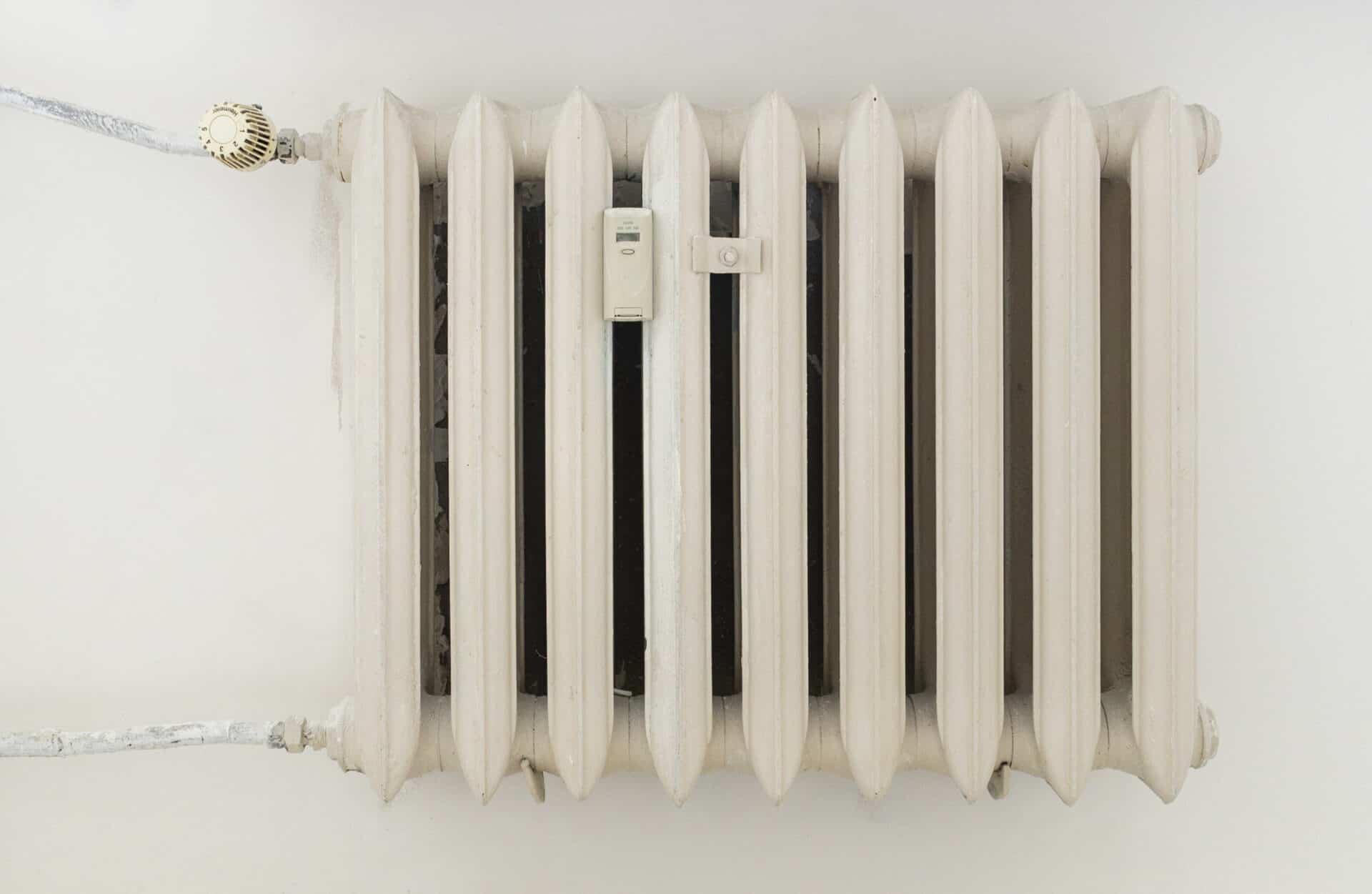Having a hot water heater is essential for any household. However, it is important to make sure that your hot water heater is set at the right temperature in order to ensure safety and efficiency. The ideal temperature range for a hot water heater should be between 120°F (48°C) and 140°F (60°C). Setting the temperature too high can lead to scalding, while setting it too low can cause bacteria growth. It is important to find the balance between these two extremes in order to get the most out of your hot water heater.The recommended temperature setting for a hot water heater is 120°F (49°C). This temperature is hot enough to provide an adequate supply of hot water while reducing the risk of scalding and minimizing energy use.
What Temperature Should Your Hot Water Heater Be Set At?
The temperature of your hot water heater should be set to 120 degrees Fahrenheit. This is the recommended setting for maximum energy efficiency and to prevent scalding. Setting the temperature too high can cause damage to the pipes and even increase the risk of a fire. It is also important to note that certain states have laws in place that require a lower temperature setting for safety reasons.
When it comes to adjusting the temperature settings, it is important to read the manufacturer’s instructions carefully before making any changes. If you are unsure, it is recommended that you contact a professional plumber or heating technician for assistance.
It is also important to keep in mind that different types of hot water heaters will require different temperature settings. Electric hot water heaters typically require slightly lower temperatures than gas-powered models, while tankless systems may require higher temperatures depending on the model and manufacturer.
Finally, it is essential to regularly check your hot water heater’s settings and adjust them if necessary. Regular maintenance can help ensure your hot water heater runs efficiently and safely, saving you money on energy costs in the long run.
How to Adjust the Hot Water Heater Temperature
Adjusting the hot water heater temperature is an important task that helps ensure safe and efficient operation of your water heater. It is recommended that you adjust the temperature of your hot water heater to a maximum of 120 degrees Fahrenheit. This will help minimize the risk of scalding, energy waste, and excessive wear and tear on the system. The following steps will help you adjust your hot water heater temperature:
1. Locate the thermostat control dial on your hot water heater. This should be located near the top of the unit, usually behind a removable panel or access door.
2. Turn off power to your water heater before making any adjustments to ensure safety. Depending on your type of hot water heater, this could mean turning off a circuit breaker in your home’s service panel or flipping a switch near the unit.
3. Using a flathead screwdriver, turn the thermostat control dial counterclockwise until it reaches 120 degrees Fahrenheit.
4. Replace any access panels or doors that you had to remove in order to reach the thermostat control dial.
5. Turn power back on for your water heater and test for proper operation by running some hot water from a faucet in your home.
If you need further assistance adjusting your hot water heater temperature, contact a licensed plumber for help.
Benefits of Setting the Right Temperature for Hot Water Heater
Having a hot water heater set to the right temperature can save you money and keep your family safe. Setting the temperature too high can lead to scalding, and setting it too low can reduce the effectiveness of the heater. The ideal temperature for hot water heaters is between 120-140° Fahrenheit, depending on your local regulations.
One of the biggest benefits of setting your hot water heater to the right temperature is that it will save you money on your electric bill. By reducing the temperature of your hot water heater, you can reduce the amount of energy it uses and in turn reduce your bill. Additionally, by setting it at a lower temperature, you’ll be using less energy overall which is better for the environment.
Another benefit of setting your hot water heater to the right temperature is that it will help keep your family safe from scalding. Hot water at temperatures above 140° Fahrenheit can cause severe burns and should be avoided in households with children or elderly people who are more susceptible to these types of injuries. By keeping the temperature at an appropriate level, you can help prevent any accidents from occurring.
Finally, setting your hot water heater to an appropriate temperature will also help maintain its effectiveness over time. If you set your hot water heater too low, it may not be able to heat up enough water for all your needs which could lead to running out before everyone has finished showering or washing dishes. On the other hand, if you set it too high, it could cause damage over time due to overheating or overuse.
In conclusion, setting the right temperature for your hot water heater has many benefits including saving money on electricity bills, keeping your family safe from scalding, and maintaining its effectiveness over time. Make sure to consult with a professional if you have any questions about what temperature is best for your household needs so that you can enjoy all these benefits and more!
Safety Considerations When Adjusting the Hot Water Heater Temperature
Adjusting the temperature on a hot water heater can be a simple task, but care must be taken to ensure it is done safely. It is important to be aware of the risk of burns and scalds when raising or lowering the water heater temperature. Additionally, there are other safety considerations such as checking for leaks, ensuring proper ventilation, and avoiding contact with electrical parts.
When making adjustments to the water heater temperature, it is important to understand that hot water can cause severe burns or scalds if it comes into contact with skin. To avoid risk of injury, the thermostat should be set to no more than 120 degrees Fahrenheit (49 degrees Celsius). Additionally, any exposed pipes should be insulated or covered to prevent accidental contact with hot water.
Before adjusting the temperature on a hot water heater, it is important make sure that there are no leaks present. Leaks can occur in any part of a water heating system such as the tank itself, pipes connected to the unit, or fittings and valves associated with it. If any leaks are present they should be addressed before making any adjustments.
It is also important to ensure that a hot water heater has proper ventilation. A lack of adequate ventilation can lead to dangerous buildup of carbon monoxide and other gases inside the home. Proper ventilation can help reduce this risk and should be checked before adjusting hot water heater temperatures.
Finally, when adjusting a hot water heater temperature it is important to avoid contact with any electrical components such as wiring or switches connected to the unit. If access to these components becomes necessary then professional assistance should be sought in order to ensure that all safety precautions are followed correctly.

Safety Considerations
When adjusting the hot water heater temperature, safety should always be the top priority. It is important to both follow the manufacturer’s instructions and to exercise caution when making adjustments. The hot water heater can become extremely hot and cause serious injury if touched improperly. Additionally, it is important to shut off the power source before attempting any adjustments to avoid electric shock.
Energy Efficiency
In addition to safety considerations, it is important to consider energy efficiency when adjusting the hot water heater temperature. Hotter water heaters use more energy, so it is important to find a balance between comfort and efficiency. An optimal setting for most households would be between 120-140 degrees Fahrenheit. This setting will help to ensure that the hot water heater is not wasting energy while still providing enough hot water for day-to-day needs.
Cost Savings
Adjusting the hot water heater temperature can also lead to cost savings over time. Hotter temperatures require more energy use which can lead to increased utility bills over time. By finding an optimal temperature setting that provides enough hot water for day-to-day needs but does not waste energy, households can save money in the long run. Additionally, investing in additional insulation around the tank or installing a timer can further reduce costs associated with heating water.
Maintenance
Finally, it is important to consider maintenance when adjusting the hot water heater temperature. Hotter temperatures can cause sediment buildup which may result in decreased efficiency and increased risk of failure over time. To ensure proper maintenance and avoid costly repairs, it is important for homeowners to regularly flush their systems and check for signs of corrosion or other issues that could affect performance.
How High Should You Set the Hot Water Heater Thermostat?
Setting the thermostat of your hot water heater is an important part of ensuring that your hot water is safe and efficient. The ideal temperature setting for a hot water heater thermostat should be between 120°F and 140°F (48°C and 60°C). It is important to note that temperatures above 140°F (60°C) can create a scalding hazard, so it is recommended to never set the thermostat above this temperature.
For safety, it is recommended to set the hot water heater thermostat no higher than 120°F (48°C). This will help reduce the risk of scalding, as well as help conserve energy by reducing the amount of energy needed to heat the water. Setting the thermostat lower than 120°F (48°C) can also help conserve energy, but may also cause bacteria growth in the hot water tank.
If you are looking for a more efficient way to heat your hot water, then consider installing a point-of-use or tankless hot water heater. These systems can provide instant hot water at lower temperatures, which can help reduce energy costs. Installing one of these systems may require additional plumbing work; however, they can be a great way to save money on your energy bills in the long run.
Overall, it is important to set the thermostat on your hot water heater correctly in order to ensure safety and conserve energy. The ideal temperature setting for a hot water heater should be between 120°F and 140°F (48°C and 60°C). Setting it higher than this can create a scalding hazard, while setting it lower may lead to bacterial growth in your hot water tank. Consider installing a point-of-use or tankless system if you are looking for an even more efficient way to heat your hot water.
How Low Should You Set the Hot Water Heater Thermostat?
The temperature setting of your hot water heater thermostat can have a major impact on your energy bills. While setting the thermostat too low may lead to not having hot enough water for your needs, setting it too high can be wasteful and can raise your energy costs. So what is the optimal temperature setting for your hot water heater?
Most experts recommend that you set the thermostat of your hot water heater to 120 degrees Fahrenheit. This is the temperature that has been found to be the most efficient while still providing enough hot water for most households. Setting it to any lower than this could mean that you’re not getting enough hot water, while any higher will increase energy waste and may even be dangerous.
If you have elderly people or small children in your home, it’s important to keep in mind that this temperature may still be too hot. In these cases, you should consider lowering the thermostat even further, possibly even down to 110 degrees Fahrenheit. This should provide enough hot water for most needs while also being safe for those who are more sensitive to heat.
It’s also important to note that if you live in an area with hard water, you may need to set your thermostat higher than 120 degrees Fahrenheit in order to prevent mineral buildup in your pipes and tank. This can cause clogs and other issues with your plumbing system, so it’s important to consult with a professional if this is an issue in your area.
Overall, when it comes to setting the thermostat on your hot water heater, 120 degrees Fahrenheit is usually recommended as being the most efficient while still providing enough heat for most households. If there are elderly people or small children living in the house, it may be necessary to lower the temperature even further in order to ensure their safety. If you live in an area with hard water, you should consult with a professional about what temperature is best for preventing mineral buildup in your pipes and tank.

Conclusion
The optimal temperature setting for your hot water heater is a matter of personal preference. As a general rule, it is recommended to set the thermostat at 120 degrees Fahrenheit or below. This setting will provide you with an adequate supply of hot water while still reducing the risk of scalding and energy costs. Additionally, installing anti-scald devices can help further reduce the risk of scalding, which can be especially important for households with young children or older adults. While it’s not necessary to adjust the temperature on a constant basis, monitoring your hot water heater’s performance and adjusting the thermostat as needed can help you ensure your system is working properly and efficiently.
In summary, when it comes to determining the optimal temperature setting for your hot water heater, 120 degrees Fahrenheit or below is typically recommended. However, depending on your preferences and household needs, adjusting the temperature higher or lower may be necessary. Taking into account factors such as efficiency and safety can help you make an informed decision that best suits your needs.

